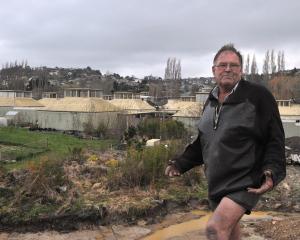Queenstown Lakes house values are second only to the cooling Auckland market, the pair's average prices for 2015 up about 13% or more at $776,671 and $933,264 respectively.
Since the post-October increase in Reserve Bank lending restrictions and new investment tax regulations, Auckland now shows signs of weakening, while other centres are making gains, albeit on smaller scales.
Nationally, residential property values surged ahead during the year to December at a rate more than 14% faster than for the same period the previous year, ending at $558,146, Quotable Value (QV) national spokeswoman Andrea Rush said yesterday.
Separate Massey University housing affordability data this week revealed Otago affordability for the last quarter of 2015 deteriorated by 9.5%, because of a decline in wage levels, while rising wages saw Central Otago-Lakes affordability rise by 10.7%.
Auckland was 59% less affordable than anywhere else in the country.
The QV gains across Central Otago and around wider Dunedin and environs were more modest than the national average, with the upper echelons in a gain-range of 7.6% to 8.6%.‘‘Dunedin City home values rose at a moderate rate of 5.7% year on year and 2.1% over the last three months of 2015, which is faster than the market there has risen at any time since the previous peak of 2007,'' Ms Rush said.
Both the Whangarei and Queenstown Lakes districts saw values up significantly, rising respectively 12.9% and 12.1%, she said.‘‘The Queenstown Lakes district now has the highest average value in the country outside of Auckland, at $776,671.'' CoreLogic director of research Jonno Ingerson said the 2016 outlook appeared positive for most of the country, with transaction numbers picking up and values increasing in many areas outside Auckland.
‘‘With the various Government and Reserve Bank restrictions now beginning to take effect, and foreign buyers apparently much less active, our expectations are that Auckland values will drop a few percent over the next few months,'' he said.
‘‘While Auckland may take a breather, the surrounding areas are likely to continue to rise, driven both by local demand and by Aucklanders choosing to move to more affordable locations,'' he said.
However, he cautioned that mortgage interest rates were at historic lows, migration levels were at historic highs and there remained a substantial shortage of housing in Auckland. ‘‘These are strong factors putting upward pressure on Auckland prices, and as a result any drop in values is likely to be shallow and short-lived,'' Mr Ingerson warned. ‘‘It will be a more variable outlook further south where the effect of Auckland is far less.'' He said the easing of the loan to value restrictions (LVR) outside Auckland would be a key contributor to strength in markets south of Auckland, as it would allow more first-home buyers and potentially upgraders to purchase.
Wellington values had been accelerating and that would continue in a market where demand is outstripping supply, Dunedin would also continue to increase, while Christchurch values were more likely to stay flat, Mr Ingerson said.
Ms Rush said the overall nationwide average showed residential property values increased 14.2%, or by $69,472, last year, from $488,674 in December 2014 to $558,146 in December 2015.
She said the average national value increased 2.9% during the final three months of 2015 and nationwide values overall were 34.7% higher than the previous market peak in late 2007.
Home values in the Auckland region increased 22.5%, or by $171,406, from $761,858 at December 2014 to $933,264 at December 2015. Auckland values were now 70.8% higher than the previous peak of 2007, Ms Rush said.
She said the massive Auckland increases during the first nine months of 2015, at a rate not seen since the early 1990s, led the Government and Reserve Bank to announce mid-year that they would introduce measures to curb Auckland investors.
‘‘These huge hikes in home values and pending restrictions on investors saw many look to move or invest outside of the Auckland region for more affordable homes or better rental yields during 2015,'' Ms Rush said.
That resulted in an increase in demand in upper and central North Island centres including Hamilton, Tauranga, the Waikato District, Hawkes Bay, Whangarei and Rotorua.
Following introduction of the new measures in October and November, the rate of growth in the Auckland market slowed, while values in many other centres, including Wellington and Dunedin, saw ‘‘significant value increases'', for the last three months of the year, she said.





